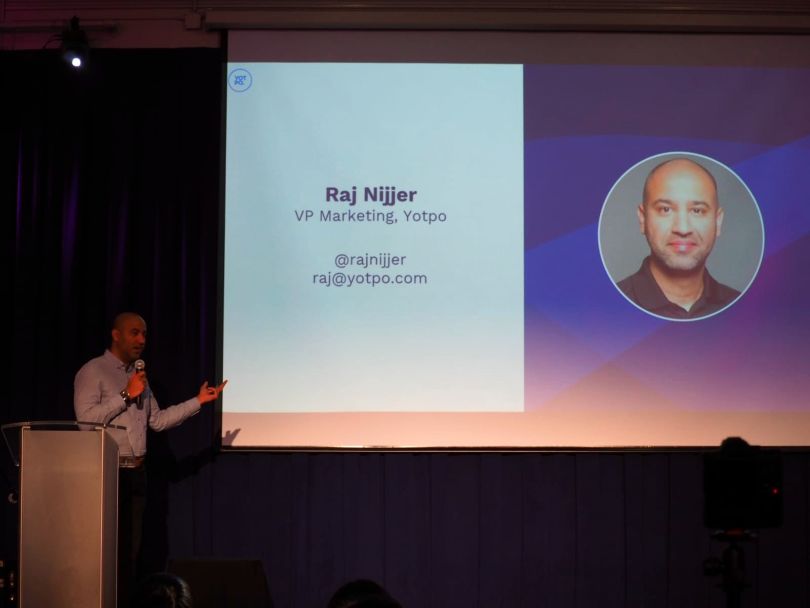“All the growth is coming from e-commerce,” declared Ed Rosenfeld, CEO of Steve Madden, during the shoe retailer’s earnings call for the second quarter of the year.
At the end of its second quarter on July 30, Steve Madden reported that e-commerce sales were up 50 percent year over year. The shoe retailer’s online profit margin was set to outpace its brick-and-mortar stores for the first time ever and, after a recent switch from a homegrown platform to Shopify Plus, the firm’s mobile conversion rates grew.
Nearly 80 percent of the firm’s online sales are completed through mobile, according to Raj Nijjer, vice president of marketing at Yotpo, an e-commerce marketing firm that counts Steve Madden as a customer. Nijjer credited Steve Madden’s e-commerce success to its laser focus on strategy.
“They are equal parts strategy and equal parts maniacal execution.”
“Steve Madden is the classic example of somebody that is a great e-commerce leader. They are equal parts strategy and equal parts maniacal execution,” Nijjer said.
At Yotpo’s recent “Destination: D2C” conference in New York, representatives ranging from Steve Madden’s head of global e-commerce to Rebecca Minkoff’s, um, Rebecca Minkoff, talked about the features necessary for a successful direct-to-consumer e-commerce site. They named investment in mobile, crowdsourced ratings and reviews, and customer loyalty programs as essential to driving community — and converting customers.
They also said rising venture capital investment across all direct-to-consumer e-commerce verticals, in particular healthtech brands geared toward women, was a key move to watch. The number of brands selling directly to consumers online is growing “exponentially,” Nijjer said, bucking companies’ historical reliance on selling through retailers like Sears for building their brands.
“With technology democratizing access, a lot of brands are now born online and then they are shifting offline,” Nijjer said. “So what we’re seeing is they’re kind of shunning the cult of selling through retailers and embracing the concept of selling directly to customers.”

What’s direct-to-consumer e-commerce?
Direct-to-consumer e-commerce companies are firms that sell directly to consumers via their own websites. Classic examples are companies specializing in one product and marketed toward millennials, like Warby Parker’s glasses, makeup brand Glossier or Allbirds, which makes shoes.
By selling directly to consumers online — rather than going through a third-party retailer — Nijjer said companies can avoid high retail markups and invest the cost savings in a product’s quality, design, service or price. By connecting directly with consumers, firms can also better control their messaging and gather data about their purchase behavior, which can inform future business decisions.
“Anytime you add a middle man, anytime you add a marketplace, you're giving up your profit margin.”
“Anytime you add a middle man, anytime you add a marketplace, you’re giving up your profit margin and you’re giving up control,” Nijjer said. “Not just control over your financials, but also control over your brand.”

Venture capital investment in D2C brands is on the rise
While not every direct-to-consumer firm is interested in — or attracts — venture capital funding, the space has seen its share of investment. At least 400 direct-to-consumer startups have raised a combined $3 billion in venture capital since 2012, according to CB Insights. Nijjer said the funds allow companies to go to market faster, add additional products and add the talent they need to grow sustainably.
“That funding helps you with growth in terms of revenue, but it also helps you organizationally, having the right talent that can sustain a brand,” he said.
Nijjer added that many of the firms receiving venture funding right now are healthtech startups geared toward women, referred to by some as “femtech.” So far this year, these brands have attracted at least $241 million in venture funding, according to PitchBook.
The number of these firms is growing, according to Nijjer, and many, like the Thinx period-proof underwear brand, are able to generate community around their products.
“They have developed an engaged and large community that’s been largely underserved and hasn’t traditionally been female-led.”
“What you’ve seen is they have developed an engaged and large community that’s been largely underserved and hasn’t traditionally been female-led,” Nijjer said.
“It’s a lot about female leadership, female empowerment and an underserved community that is now finding its voice and, with that, cultivating a whole new movement.”

Social proof is key to e-commerce growth
During Steve Madden’s second quarter earnings call, Rosenfeld credited the firm’s growing online sales to paid social media advertising. He also said the shoe retailer has ramped up its work with influencers.
Steve Madden’s success reflects Yotpo’s own findings: In the firm’s “2019 Fashion Ecommerce” report, Yotpo found that having real people — and not just models — advertise its products is key to getting customers past checkout. Nearly 93 percent of shoppers surveyed reported that seeing photos of real customers wearing the products was “important” or “very important.”
Nijjer credited Steve Madden’s loyalty program, called SM Pass, with bringing customers back to the store and site. The program works both online and offline. When customers sign up online, they receive 20 percent off their order along with free two-day shipping on purchases over $50.
They also are offered the option to become a SM Ambassador — and post pictures of themselves wearing Steve Madden on sites like Instagram — and receive a commission when their followers shop the shoes through their unique Steve Madden link.
Nijjer said almost half of Steve Madden’s customers now come from the shoe store’s loyalty program, and that these consumers act as an “army of advocates” for the brand.
Steve Madden’s experience again reflects Yotpo’s findings — 85 percent of fashion shoppers said they would be more likely to purchase from a new brand when recommended by a friend, according to its report.
“It’s a great way to cultivate existing customers and, again, you’ve already paid for them,” Nijjer said. “So why not use them again and not have to acquire all these new customers that cost you exponentially more than existing customers?”

How direct-to-consumer brands are becoming more inclusive
As important as it is to have a strong loyalty program that backbones the site, Nijjer said it’s also important for the site to accurately reflect its users. In early September, the clothing retailer Rebecca Minkoff announced a new plus-size product line with StitchFix. Nijjer said the diverse body sizes featured with the line help drive a sense of community among customers.
“She has basically a new line that is focused on all shapes, all sizes, and her own website experience now also serves that type of customer because they are able to see their shape, their size,” Nijjer said.
In addition to showcasing pictures of different sized models on the site, Rebecca Minkoff also features their perspectives. Nijjer said her site offers a good example of a direct-to-consumer e-commerce brand that is “social proof,” which means it features the good, the bad and the beautiful of crowdsourced reviews. Shoppers have commented on everything from “super easy to wear” on a summer dress to “runs true to size and is very cozy” on a puffer jacket.
Minkoff also features real pictures of customers wearing the clothes underneath the product item.
“Go ask 10 people, does this product work? What do you think about it?”
“Go ask 10 people, does this product work? What do you think about it?” Nijjer said. “All those questions should be able to be answered on your website through the concept of reviews and ratings.”







